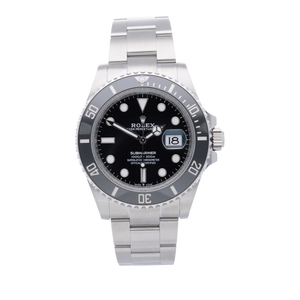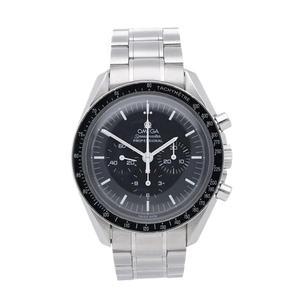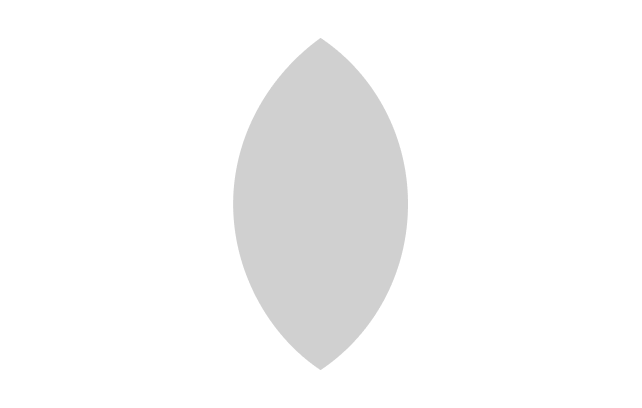How to find the right watch size
Choose the right size
Of course, the size of a watch is not comparable to shoe size, since theoretically you could wear a larger watch even on a narrow wrist. However, to find the right watch, you should first measure your wrist using the strap. Small watches have a diameter of 41 millimeters and are particularly suitable for a wrist with a circumference of around 16 centimeters. If your wrist has a circumference of around 19 centimeters, a medium model with a circumference of 46 millimeters is a good choice. There are also watch models that are marked with the suffix XXL. These particularly large watches are particularly suitable for wrists with a circumference of 22 centimeters or more.
However, the whole thing isn't as simple as presented here, as there may well be other gradations that can vary significantly depending on the manufacturer. Thus, some manufacturers also offer particularly small watches with a circumference of 34 to 37 millimeters. Furthermore, the terminology can vary considerably. A watch in size XXL can therefore also be described as oversized.
A watch should not only be chosen according to personal preference
Watch size is, of course, an important criterion for properly caring for your wrist. Only by choosing the correct size will a watch fit perfectly. But it's not just about practical aspects. An XXL watch can be quite interesting in certain professions and make a sensible impression. This is especially true if you work in a creative profession. A beautician or someone working in design can really stand out with a large and colorful watch. In such professions, it is certainly welcome.
The situation can be quite different in professions where a particularly professional appearance is required. A bank employee will therefore likely opt for a more discreet model that doesn't stand out due to its excessive size. Of course, the type of watch also plays a role. A silver XXL watch will naturally look completely different than a large pink or light blue watch. Generally speaking, in professional professions where you have to pay particular attention to your appearance, you should opt for smaller watch sizes.
Other important factors regarding the correct size of a watch
As already mentioned, the topic of watch size is actually very tricky. As already described, it starts with the different gradations. Not all manufacturers conform to this. But even watches with the same circumference can appear completely different. This is primarily due to the relationship between the dial and the bezel. A particularly wide bezel can make a watch appear smaller, whereas an extended dial can also make a watch appear larger. This effect is particularly accentuated if the bezel is very finely crafted. A wide bezel can also make a watch appear a little clunky, but of course this is again in the eye of the beholder. Colors can also influence the perception of size of a watch. A black watch always tends to appear a little more pompous.
Ultimately, you can base your decision on the following dimensions:
-
A wrist circumference of 16 cm results in a watch diameter of 38 mm – 41 mm
A wrist circumference of 17 cm results in a watch diameter of 39 mm – 42 mm
A wrist circumference of 18 cm results in a watch diameter of 40 mm – 44 mm
A wrist circumference of 19 cm results in a watch diameter of 41 mm – 45 mm#
A wrist circumference of 20 cm results in a watch diameter of 42 mm – 46 mm
A wrist circumference of 21 cm results in a watch diameter of 43 mm – 50 mm
Determine the right watch size on your wrist
But how do you go about determining the correct watch size based on your wrist? The best way to do this is to use a flexible ruler or, even better, a tape measure. Now you can read off the exact measurement. Multiply this determined value in centimeters by a factor of 2.3. This gives you the correct watch size. For a wrist circumference of 20 centimeters, this would result in a watch diameter of 46 mm.
However, it's important to distinguish between round and square watches. If you decide on a square watch, it's a good idea to subtract another 20 percent from the total to arrive at a reasonable average.
Men and women sometimes have different needs
Gender can also play an important role in choosing the right watch size. Men often prefer a larger watch. This isn't surprising, since for many men, it's the only piece of jewelry they wear regularly and therefore has a particularly important meaning. If the watch you choose ends up being a size too big, this doesn't necessarily have to be a problem.
Women often make different decisions here. They prefer watches to appear small and delicate. This isn't necessarily surprising, as almost every woman wears rings, necklaces, and sometimes other jewelry. Thus, the watch doesn't necessarily have to be the most important piece of jewelry.
The design can also influence the watch size
Color and shape, as well as the specific construction of a watch, can also have a significant impact on its appearance in relation to its size. A black, very wide dial often makes a watch appear particularly large. A white watch with a wide bezel and a narrow dial can often be perceived as considerably smaller, even though the two sizes are comparable.
Conclusion
The world of wristwatches is extremely colorful and diverse. To determine the right watch size, you should first measure your wrist and multiply the resulting measurement by a factor of 2.3, especially with round watches. Ultimately, though, you also have to like the watch. Men often opt for slightly larger models.












